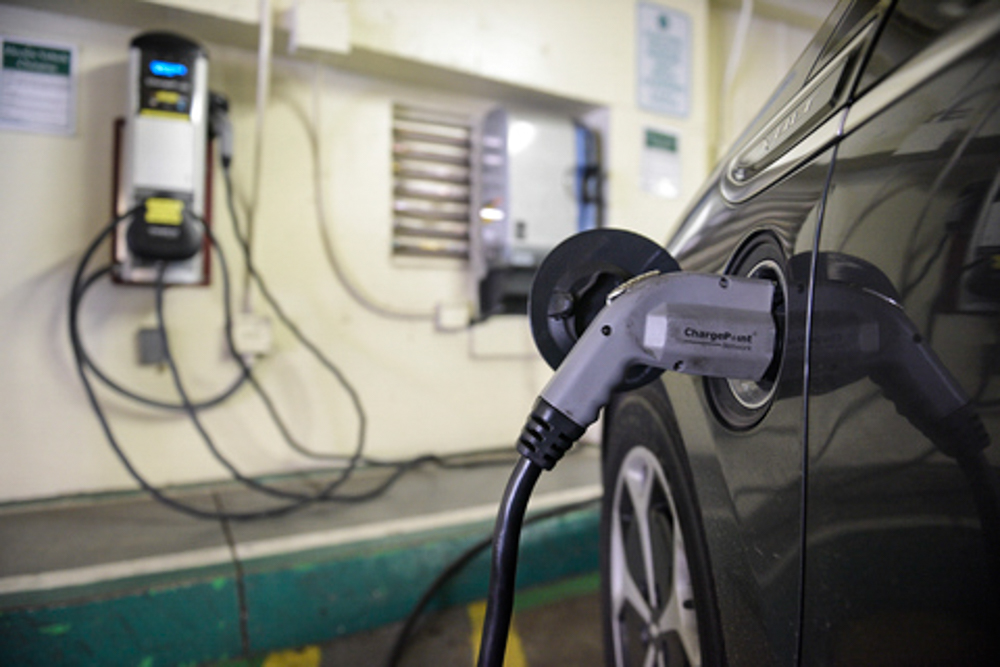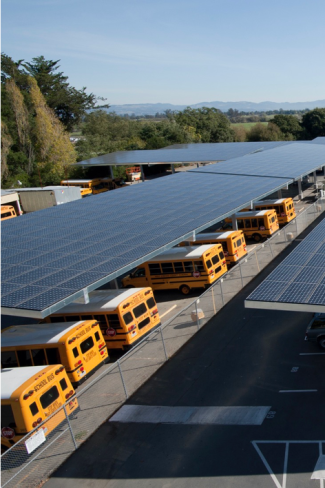S.B. School District to Go Off the Grid
Santa Barbara Unified Will Install Solar, Battery Storage, Microgrids Districtwide

The Santa Barbara Unified School District is embarking on a massive plan to install solar energy, battery storage, and electrical vehicle charging stations at school sites districtwide.
“This is a really important signal to the younger generation that we’re taking the climate crisis seriously,” said board president Laura Capps. “We are making an investment in a very bold vision of how to deal with the new climate reality — their future.”
The school board unanimously approved the first six steps of the renewable energy project at its last meeting in December. The steps involve the district partnering up with two environmental firms to complete a feasibility study by June 2020, beginning this month.
If the project does not turn out to be financially feasible, the district can pull out at any time. If it is, the district will negotiate an agreement with the environmental firms and begin the remaining construction steps to have all infrastructure and systems running by 2022.

The project about resiliency in times of emergency as much as it’s also about sustainability. Steve Vizzolini, the district’s director of facilities and operations, said that the renewable energy infrastructure is more necessary now because natural disasters and public safety power shutoffs are becoming the “new norm” in Santa Barbara.
The new infrastructure would allow district schools to serve as a community safe haven during emergencies. Surrounding community members would come to the school sites to charge devices and eat and store perishable foods, and in greater disasters that call for evacuations, the schools would have the power to provide evacuees with warmth and light for days.
“We [the district] have an agreement with the Red Cross that our campuses can be used as evacuation centers during disasters, and San Marcos is their preferred site,” Vizzolini said. “But San Marcos has been on the public safety power shutoff list every shutoff so far, so it would make sense to make that campus resilient.”
The resilience he refers to would come from the proposed microgrids. Microgrids are like a smaller version of the electric grid, but they can run independently even if the main electric power grid is shut off during a disaster or public safety power shutoff. Vizzolini said the microgrids could power each site for 3-5 days.
Two environmental firms partnered together to take on the project. The Clean Coalition, a Santa Barbara–based company with microgrid experience, and Sage Energy Consulting, a San Rafael–based firm with solar infrastructure experience, are the two firms that will enter into a power-purchase agreement with the district in June if the initial financial feasibility study is successful.
The power-purchase agreement would only require the district to pay for the cost of energy, and the Clean Coalition and Sage Energy would design, finance, build, and manage the infrastructure. These types of agreements typically last about 25 years and would save the district from having to shell out start-up or maintenance costs.

In addition to the microgrids and solar panels, the plan will include putting electric car charging stations at every school in the district.
“When our power was out, I had to scrounge for a place to charge my Leaf, and I realized Santa Barbara is kind of a desert,” Superintendent Cary Matsuoka said. “I had to charge at Peabody and then at some city lots. I learned that it’s a real challenge to charge a car through public tools.”
The initial project management costs involved in the first six steps costs a maximum of $287,900 and is being paid from the State Facility Grant Matching funds. The project is fast-tracked to begin this month to help get incentives and tax breaks that would allow the district to better negotiate with Clean Coalition and Sage Energy if they were to go into a power-purchase agreement.
“This is such a bold vision, and I’m thrilled,” Capps said. “This feels like a new day.”




You must be logged in to post a comment.